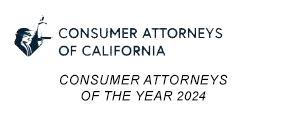NFL Concussion Injuries Litigation
Issue: Repetitive head trauma
NFL Concussion Settlement Status
On April 22, 2015, U.S. District Court Judge Anita Brody, the federal judge overseeing the NFL concussion and head trauma litigation, granted final approval to the revised settlement. The road to establishing an operational settlement fund still remains ahead, along with resolution of various objectors’ pending appeals. Judge Brody’s Order approving the settlement is a meticulously written, 132-page opinion that we believe will be affirmed on appeal in the event that objectors do not otherwise resolve their issues with the settlement.
Earlier Case Developments
On July 7, 2014, U.S. District Court Judge Anita Brody granted preliminary approval to the revised settlement. The ruling by Judge Brody came about two weeks after the NFL agreed to remove a $675 million cap on damages.
The grant of preliminary approval to the settlement does not mean the settlement is final. Judge Brody has scheduled a fairness hearing on November 19, 2014, at which time she will hear arguments for and against granting final approval of the settlement.
If you have any questions, please feel free to call us at 212 355-9500.
NFL Players Lawsuit Summary
Lieff Cabraser represents former professional football players and their spouses in a class action lawsuit seeking damages for the painful and debilitating injuries they suffered from repetitive head traumas during their careers in National Football League. The injuries include concussions and repeated head impacts, traumatic brain injuries, and latent neurodegenerative disorders and diseases.
The complaint seeks damages for the players’ injuries. The complaint further seeks to recover fair compensation for the spouses from the loss of companionship, affection, and support the spouses have suffered due to their husbands’ injuries. For those players that have not yet evidenced the long term physical and mental effects of repetitive head traumas, the complaint seeks the establishment of a medical monitoring program. This program would provide specialized testing for the early detection of the long term effects of repetitive head traumas.
Key Factual Allegations in the Pro Football Injuries Lawsuits
Factual allegations in the complaint include:
- The NFL and several of the scientists it employed actively tried to conceal the severity and extent of concussion-related brain injuries until 2009.
- In 1994, the NFL created the Mild Traumatic Brain Injury Committee (MTBI Committee) to conduct a study on the long-term effects of concussions on players. Thirteen years later, in 2007, the NFL claimed that the study was still in its initial data collection phase.
- In October 2006, the MTBI Committee released an interim report stating that “mild TBIs in professional football are not serious injuries.” Plaintiffs allege that the MTBI committee stated this conclusion knowing it went against scientific evidence, and that MTBI scientists were biased in data collection techniques.
- Scientists not funded by the NFL have long understood and studied for decades the negative effects of repetitive head trauma in sports.
- In 1928, clinical abnormalities in boxers “who stayed in the game long enough” were described, and a follow-up study was published in 1952.
- Second Impact Syndrome (SIS), identified in 1973, occurs when someone who has not fully recovered from an initial concussion receives another blow to the head. Even a minor impact in this state can cause the fragile, unhealed brain traumatic and permanent damage. When concussions occur frequently, a progressive neurodegenerative disease called Chronic Traumatic Encephalopathy (CTE) can develop, leading to dementia. Football players who return to the field before allowing initial concussions to heal are at risk of developing SIS and CTE.
- Dr. Barry Jordan, Director of the Brain Injury Program at Burke Rehabilitation Hospital in White Plains, New York, presented a study in 2000 examining player concussions and long term health. Dr. Jordan surveyed 1,094 football players and found that (a) more than 61% had suffered at least one concussion in their careers with 30% of the players having three or more and 15% having five or more; (b) 51% had been knocked unconscious more than once; (c) 73% of those injured said they were not required to sit on the sidelines after their head trauma; (d) 49% of the former players had numbness or tingling; 28% had neck or cervical spine arthritis; 31% had difficulty with memory; 16% were unable to dress themselves; and 11% were unable to feed themselves; and (e) eight suffered from Alzheimer’s disease.
- A 2003 study partially authored by Dr. Kevin Guskiewicz of the University of North Carolina, who had conducted previous studies of football injuries, found a link between repetitive head trauma and depression in football players. Dr. Guskiewicz data from 2,500 retired NFL players and found that having three or four concussions meant twice the risk of depression as never-concussed players, and five or more concussions meant nearly a three-fold risk.
- When non-NFL-affiliated scientists published studies showing the negative long-term effects of repetitive head trauma, MTBI Committee members routinely attacked the validity of these studies, and claimed that there was no conclusive evidence that showed such a link.
- MTBI Committee collected biased data for their research, actively excluding test results from non-concussed players when determining a baseline normal range of scores for uninjured NFL players.
- Even after acknowledging the dangers involved in repetitive head trauma, the NFL did not take adequate steps to educate players and to keep players off the field after suffering concussions during games.
Contact Us
We will review your claim without fee or obligation, and Lieff Cabraser agrees to protect your name and all confidential information you submit against disclosure, publication or unauthorized use to the full extent under the law.











